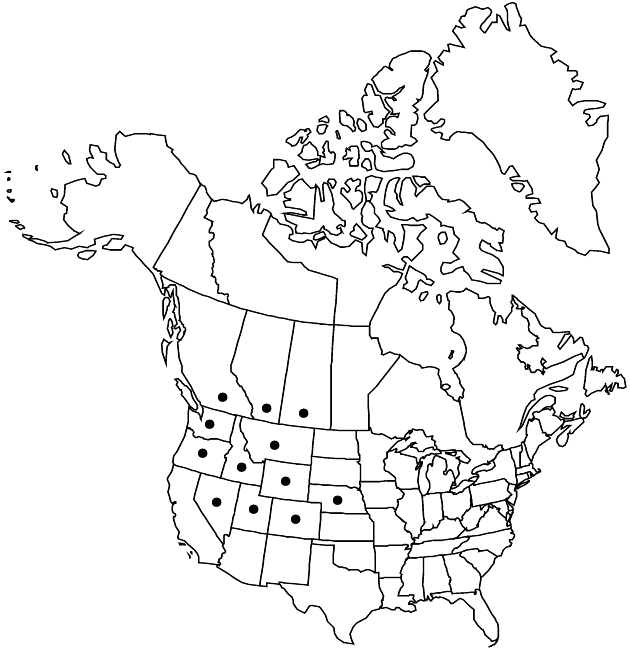Crepis atribarba
Bull. Torrey Bot. Club 26: 314. 1899.
Perennials, 15–70 cm (taproots slender, caudices swollen, often covered by old leaf-bases). Stems 1–2, erect, slender, usually branched distal to middles, glabrous or tomentulose. Leaves basal and cauline; petiolate; blades lanceolate to linear, 10–35 × 0.5–6 cm, margins deeply pinnately lobed (lobes narrowly lanceolate or linear, usually entire or toothed), apices acuminate, faces tomentulose to glabrate. Heads 3–30, in corymbiform arrays. Calyculi of 5–10, narrowly triangular to lanceolate, tomentose bractlets 1–3 mm. Involucres cylindro-campanulate, 10–12 × 4–7 mm. Phyllaries 8–13, lanceolate, 10–12 mm (margins yellow, scarious, eciliate), apices acute, abaxial faces usually tomentulose, sometimes glabrous, often with coarse, green or blackish setae, adaxial glabrous or with fine, appressed hairs. Florets 6–35; corollas yellow, 10–18 mm. Cypselae dark or blackish green, subcylindric, 3–10 mm, apices tapered, not beaked, ribs 12–15 (distinct); pappi whitish, 5–9 mm. 2n = 22, 33, 44, 55, 88.
Phenology: Flowering May–Jul.
Habitat: Dry, open, grassy places, sagebrush slopes, pine forests, gravelly stream banks
Elevation: 200–3000 m
Distribution

Alta., B.C., Sask., Colo., Idaho, Mont., Nebr., Nev., Oreg., Utah, Wash., Wyo.
Discussion
Crepis atribarba is generally recognized by the deeply pinnately lobed leaves with linear lobes, fine tomentulose indument on stems and leaves, setose phyllaries, and dark green, strongly ribbed cypselae. It is a variable mixture that includes polyploid, apomictic forms and hybrids with C. acuminata and other species. The typical form is recognized by its short stature, narrow pinnately lobed, tomentulose leaves, stems with 3–10 heads, and phyllaries with scattered, black, eglandular setae. Larger, more robust forms with stems 30–70 cm, 10–30+ heads, narrower involucres, and few or no black setae have been recognized as subsp. originalis. The latter was considered by E. B. Babcock (1947) to represent the original diploid form of the species; it is difficult to distinguish in practice.
Selected References
None.
Lower Taxa
"fine" is not a number."fine" is not a number.